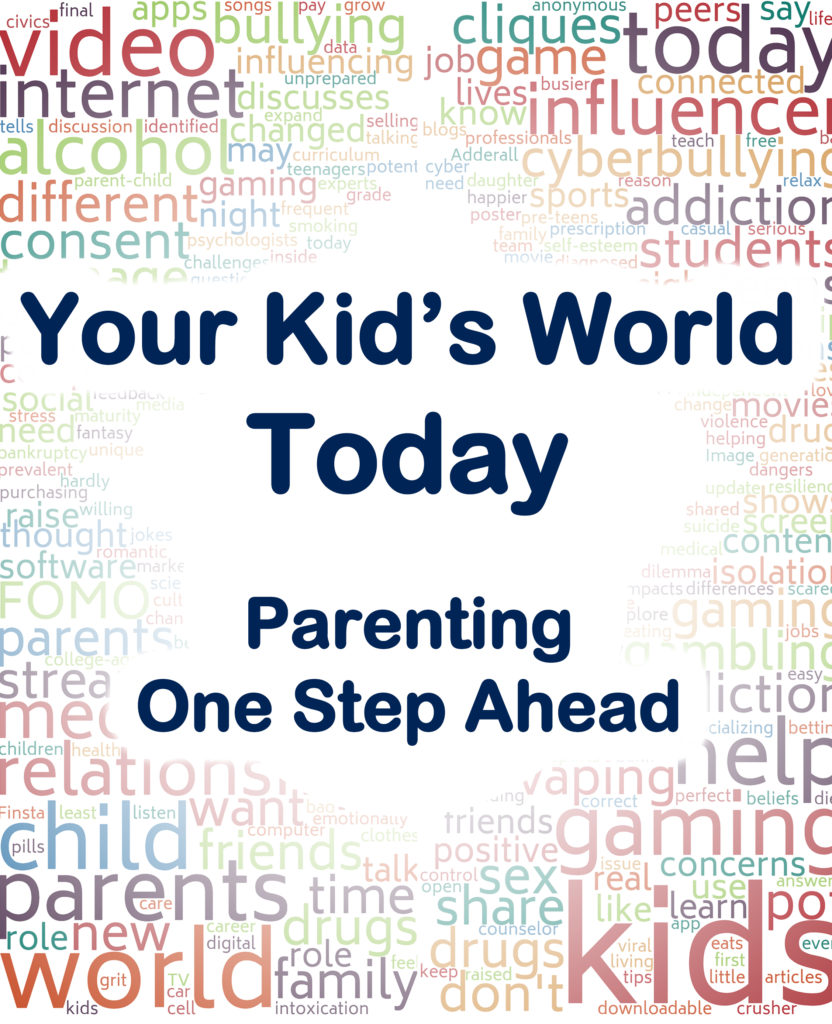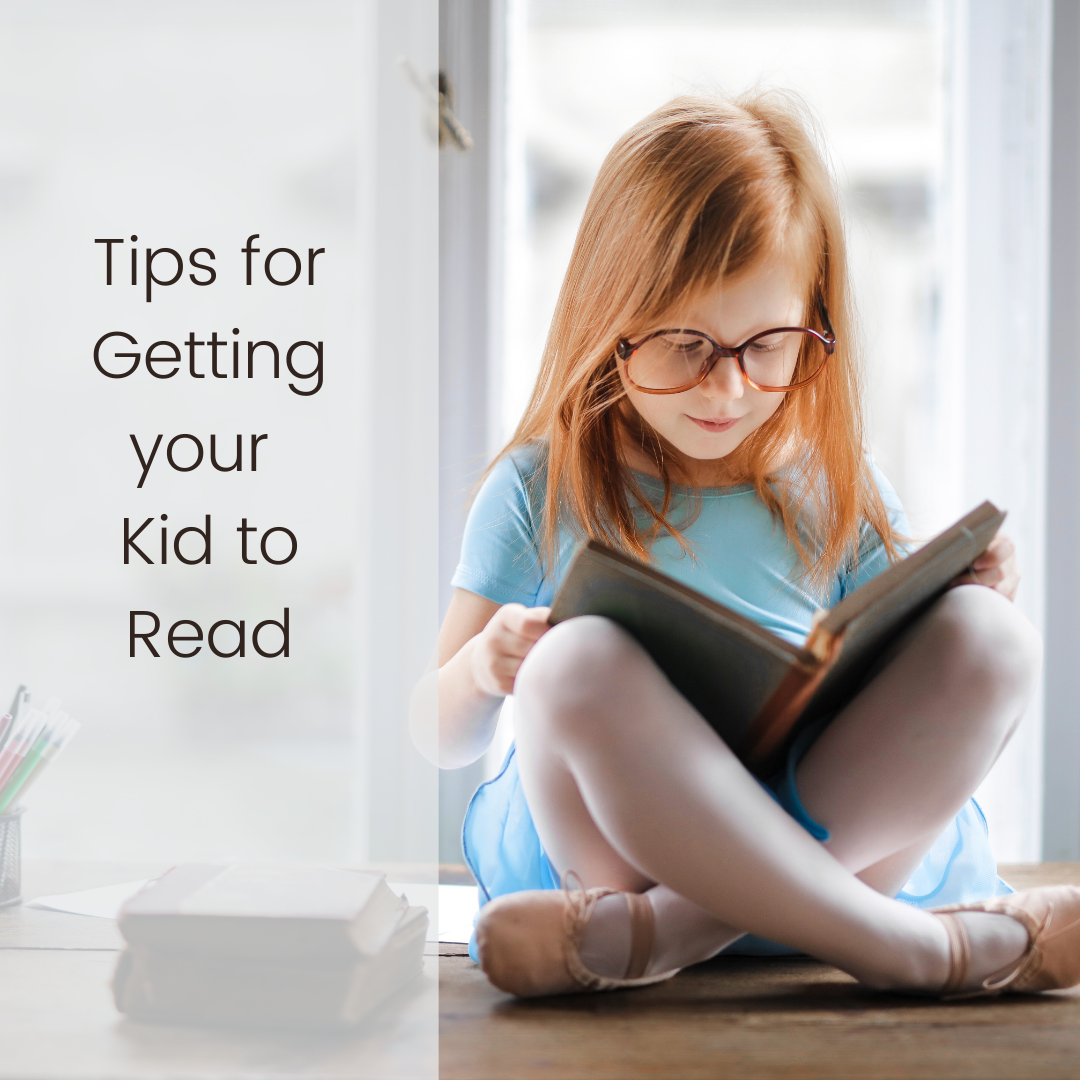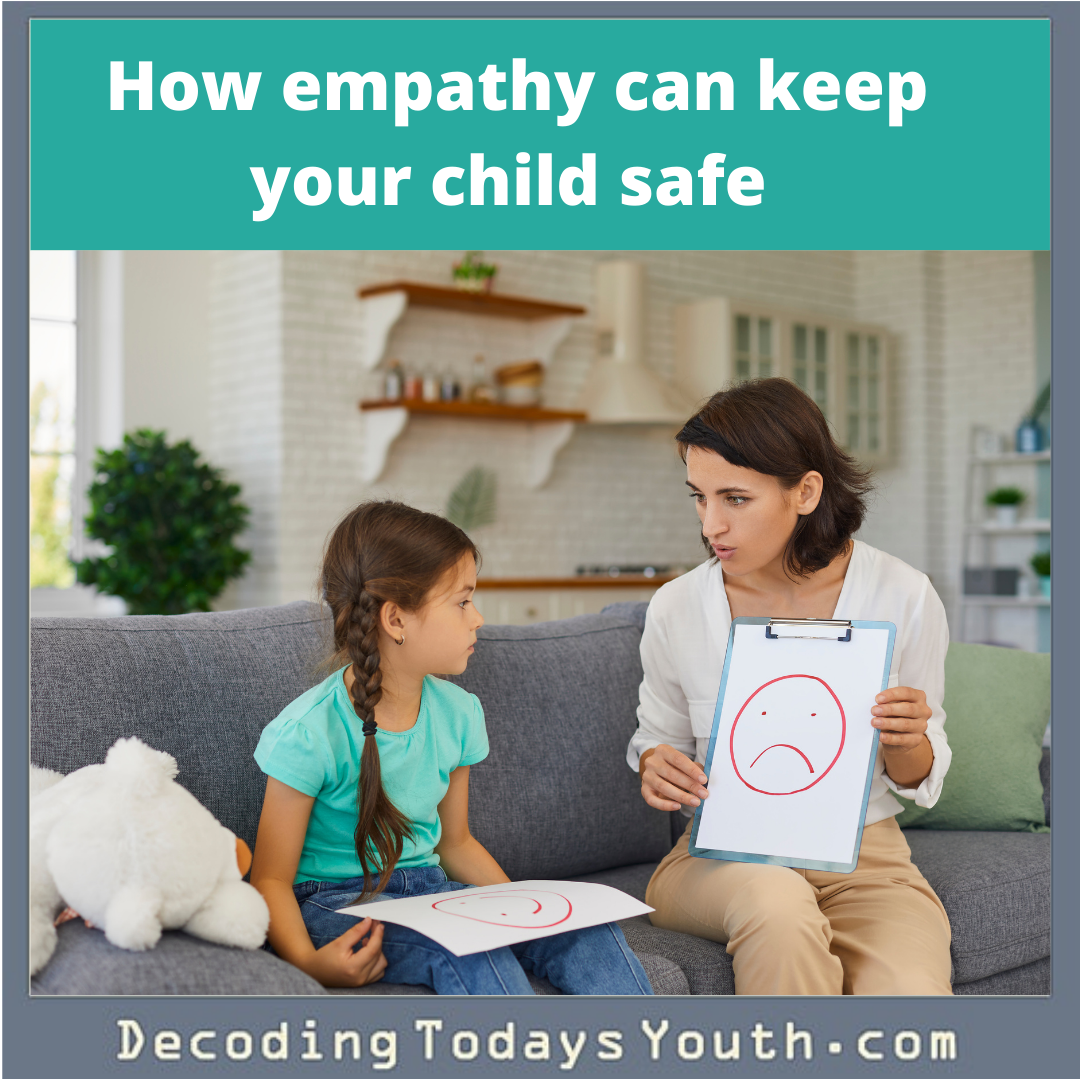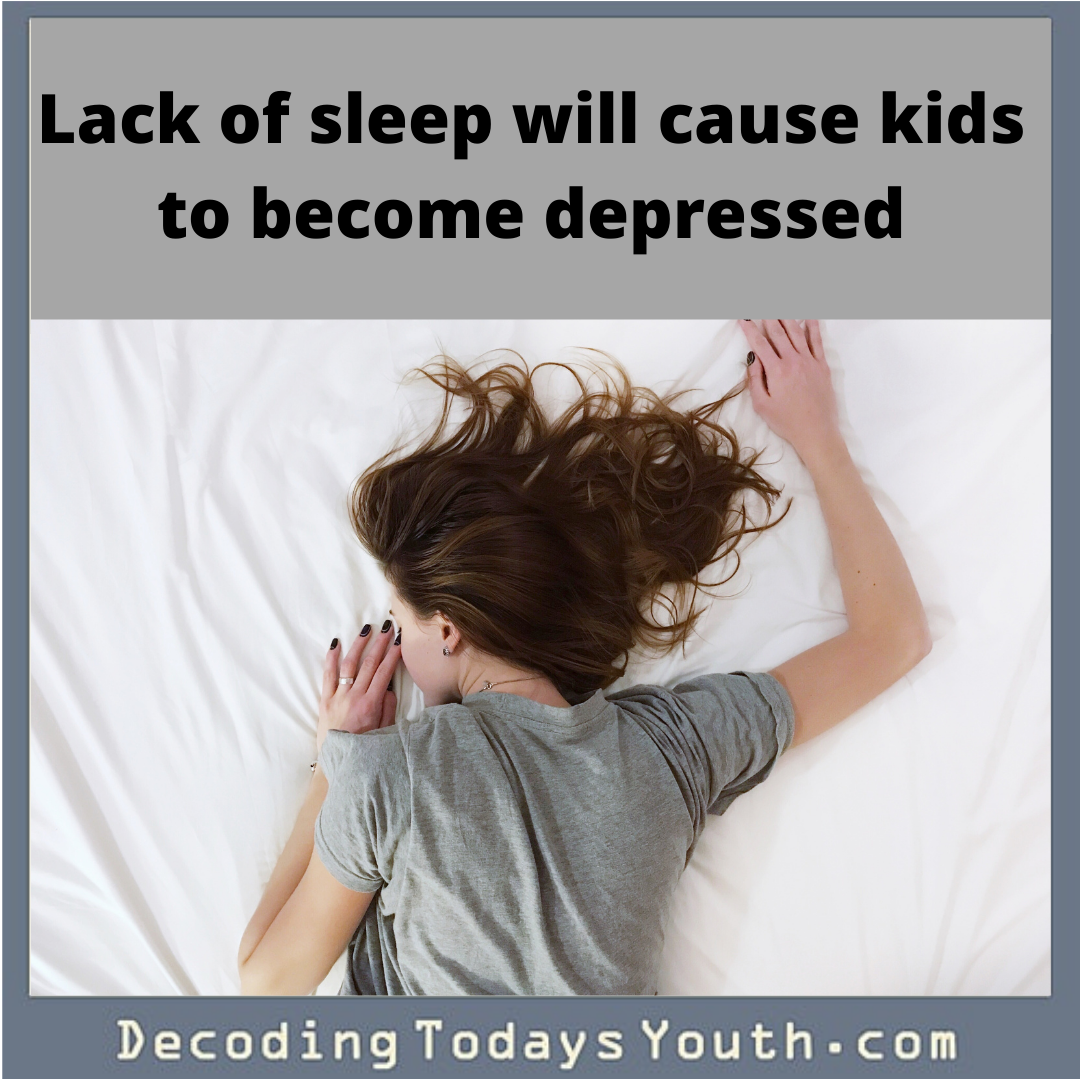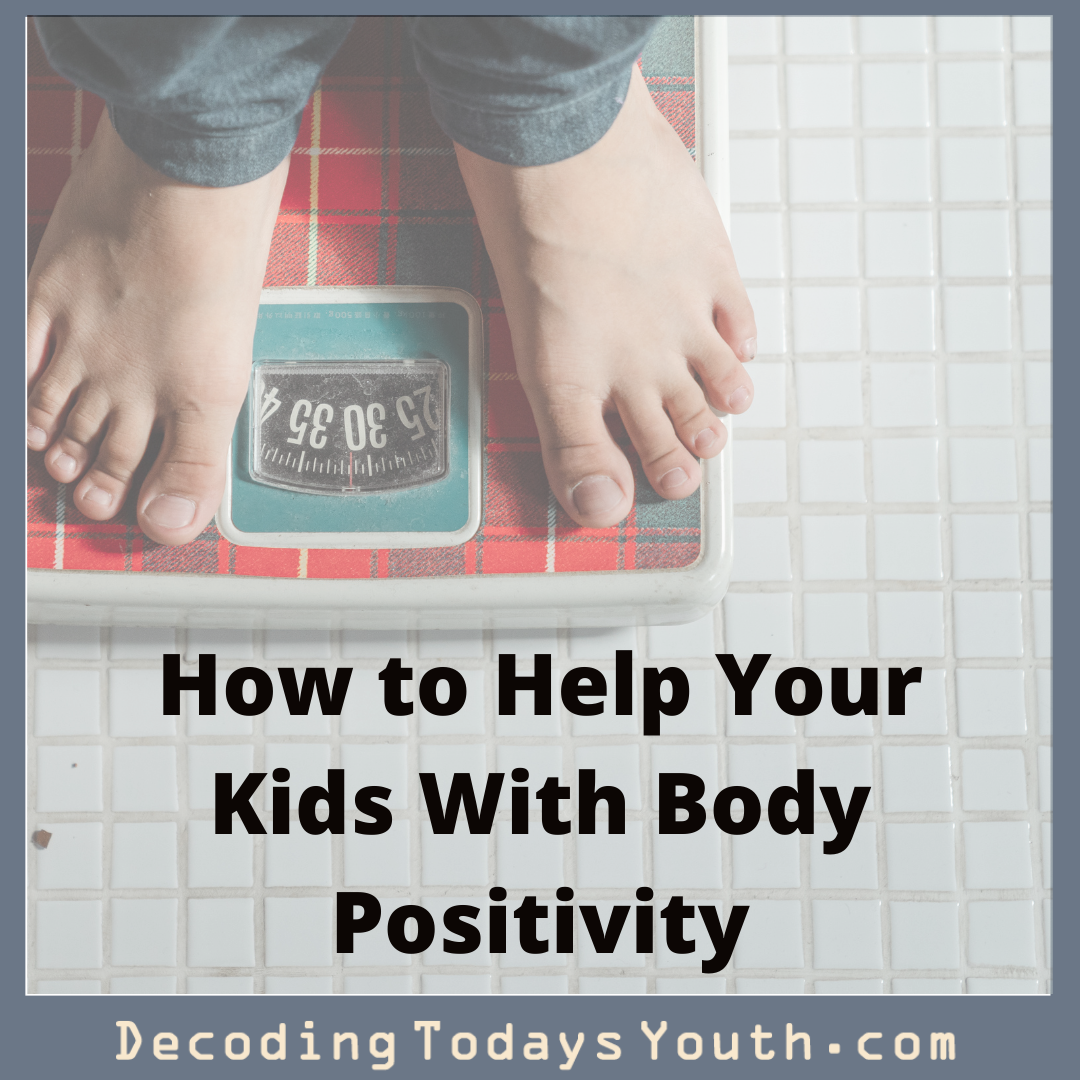We’ve put our best stuff, plus a lot of new stuff, in our recently released book. Great as a gift for any caregiver that has to understand the world of our children and youth. In a clear and accessible way, it shines a light on the social and technological environment that parents find mystifying and frightening. It covers a host of important and up-to-date issues including social media, finances and gambling, television, health (alcohol, drugs, vaping, depression, suicide), relationships, bullying, gaming, and many others. The book’s organization into topical chapters allows the reader to quickly find well-researched information on a given issue. A salient feature of the book is that it is largely written by young people themselves who have experienced these challenges yet have done the hard work of thoroughly investigating and reporting each topic. Get it now in Kindle or paperback version at Amazon.com
Thanks! And we’re taking a break!

First, THANK YOU to everyone who has been reading our blog. Our statistics say we’ve been visited over 45,000 times! That’s fantastic. We’re very grateful that you decided to spend some of your valuable time with us.
But it’s the end of the semester for us, and all of my students are graduating or leaving for their summer job. So we’re going to take a little break this summer and hopefully come back strong in the fall.
If you’ve enjoyed our content, please let us know. And if you have any ideas or topics you think we should cover, feel free to reach out to me.
Enjoy your summer!
Cheers,
Erick
Vaping may lead to brain fog in kids

A new survey, conducted by The University of Rochester Medical Center, shows that kids who began vaping before the age of 14 are more likely to experience mental fog.
The University of Rochester (URMC) conducted two studies. One showed that both adults and adolescents who vaped had a higher chance of experiencing difficulty concentrating, memory loss, and less ability to make decisions compared to those who do not vape. The other study showed that children who began vaping before 14 were more likely to experience mental fog.
Brain fog or mental fog is not a medical condition but a term to describe a cluster of the symptoms such as confusion, disorganization and lack of concentration that affect one’s ability to think coherently.
The studies analyzed over 18,000 middle school and high school aged adolescents who responded to the National Youth Tobacco Survey. More than 886,000 U.S. adults responded to the Behavioral Risk Factor Survey which was conducted via phone. These two surveys asked questions regarding smoking and vaping habits, issues with memory, attention and mental fog.
In December 2020, the National Institute on Drug abuse found that while the surge of teen vaping did not increase between 2019 to 2020, the numbers remain high. They conducted a survey of more than 11,800 students from 112 U.S. schools in 2020 to determine what percentage of teens vape nicotine. According to the survey, 16.6 percent of 8th graders and 34.5 percent of 12th graders vape nicotine.
The percentages of 8th and 12th graders who vaped marijuana between 2019-2020 were lower at 8.1 percent of 8th graders and 22.1 percent of 12th graders.
The 16.6 percent of 8th graders are most likely to experience the negative effects of vaping described in the two studies because these students are usually between the ages of 13 to 14 years old.
“Prevention programs that start in middle or high school might actually be too late,” said Dongmei Li, Ph.D and an author of the survey conducted by URMC. He’s also an associate professor in Clinical and Translational Institute at URMC.
According to the study, middle and high school students are “more susceptible to nicotine-induced brain changes” because their age is a “critical period for brain development, especially for higher-order mental function.”
For more information:
https://www.sciencedaily.com/releases/2020/12/201228105445.htm
Tips for Getting your Kid to Read

As a future English teacher, and an avid reader myself, I know just how vital it is to develop a love for reading in students at a young age. Ever since I was little, I was reading everything I saw – books, magazines, billboards, even the labels on canned goods in the pantry. This excitement I hold about reading has stemmed from when I was a young girl and my parents encouraged me to read every day.
Child development researchers note that parents play a crucial role in their child’s literacy and speech development, before, during, and after children start “formal” schooling. These skills can be developed anywhere from encouraging your baby’s “babbles” all the way to introducing new vocabulary words to your toddler.
By following even one of the tips below, you will be able to foster reading in your child to create a lifelong reader.
Read to Them!
Read every day, even if it is only for five minutes. Whether you realize it or not, your child learns more vocabulary and speech skills every time they are read to. So, make reading with your littles a habit. Read before bedtime, when you wake up in the morning, after dinner, whenever Plus, this moment with your child is one filled with love and memories neither one of you will forget.
Read to Yourself!
It is just as important to work on your own reading skills as it is to encourage your children’s skills. Now, I don’t mean that you need to read novel after novel each week. Reading anything (i.e. books, magazines, newspapers, blogs, etc.) counts as reading! Through this practice, not only will you become a stronger reader, but your child will see you enjoying reading. After all, “monkey see, monkey do,” right?
Books, books, and more books!
Reading is so much fun but reading the same things over and over again can become boring. While re-reading is vital to the development of literacy skills (comprehension, vocabulary, patterns, etc…), it may start to bore your child once the story is ingrained in their minds. Therefore, have as many types and quantities of reading materials that you can. If constantly buying new books is not in your family budget, take a trip to the local library.
It is also important to remember that as your children grow and their reading levels advance, so do their reading abilities. Keep a collection of reading material that spans a few different reading levels so that you child has many different options.
Keep Up with the Times
Growing up with very little technology, it is hard for us to imagine that electronics can be used to read. There are multiple educational apps (i.e. ABCmouse, YouTube Kids, PBS KIDS games, etc.) that have games and videos that promote learning and reading. This is a great way to promote and foster that learning and reading in children, especially on the go.
These are just a few suggestions and ideas on how to foster reading in your children. For more information, check out the following links!
https://theconversation.com/parents-play-a-key-role-in-fostering-childrens-love-of-reading-121089
https://masandpas.com/14-ways-to-foster-a-lifelong-love-of-reading-for-your-child/
How empathy can keep your child safe

Have you ever thought about where or how your kid’s have learned empathy? And what implications it might have later in life? Have you ever thought about explicitly teaching your kids empathy?
According to a study published by the peer-reviewed Journal of Moral Education, children who grew up receiving empathy were less likely to participate in acts of criminal or delinquent behavior. Empathy, or being able to show and understand how others are feeling, is a crucial part of social life.
The study focused on data from a survey conducted over a 4-year period from children ages 12 to 17. The study started out asking the children questions pertaining to parental support like whether or not they trusted their parents or talked to their parents. Then they asked questions pertaining to empathy by asking them to make statements like whether or not they empathized with their friends or tried to make others feel better. In the last session, years later when the kids had now grown to age to 16 and 17 years old, they discussed whether or not they participate in delinquent acts from graffiti to physical threats and robbery.
The study showed not only decreased likelihood of criminal activity but that the children who received empathy growing up had an enhanced ability to be empathetic. Growing up receiving empathy from your parents can be crucial to how you treat others in adulthood.
“Empathy in youth appears to have the power to mediate the negative association between perceived parental support and future juvenile delinquency,” said Glenn Walters, the author of the paper and a Kutztown University (Kutztown, Pennsylvania) associate professor of criminal justice.
Walters also said that while empathy can affect how your child behaves in the future, there are several other factors that can influence whether or not your child partakes in criminal behavior. These include factors such as self-esteem and social interests.
Empathy isn’t necessarily something you actively teach your children. Some believe it’s a trait you are born with. But children learn empathy from the environment around them. This includes their parents/guardians, friends, teachers, books, television and other types of media.
Walters said that the study found that children who received parental support and empathy had increased development of empathy in their early adolescent life.
Even if you haven’t been actively encouraging and teaching your children empathy from a young age, there are still ways to foster empathy in adolescence.
Here are some tips to implement, practice and encourage empathy with your children:
Emotional Expression
First tip is to make sure your child knows that they can express all their emotions, including negative ones, with you. It can be hard for even adults to express their negative emotions, but not expressing them can lead your child to feel like they need to hide them.
Respond with Empathy
Another tip is to respond to your child’s physical (and emotional) ailments with empathy. Instead of saying “You’re fine,” try responding in a way that shows that you care and emphasize with what they are feeling. An example of a response could be, “Are you okay?” or “That looked like it hurt.” By acknowledging their feelings, you are showing them empathy and allowing them to express their own feelings.
Talk In-Person
Lastly, try to prioritize in-person communication and conversations. Children who struggle with empathy can have trouble communicating over phones. By not considering others when responding through text, you can say one thing but mean something else.
Links
For more information:
https://www.sciencedaily.com/releases/2021/02/210222192833.htm
Video Games Possible Positive Effect on Mental Health

Video games have been talked about in a negative light for many years. Violent games’ effect on children have been studied countless times.
But does it mean your children should not play any video games? The answer is no, and here is why.
Parents should consider what the game is about before determining whether it is fit for their child to play. There are games that help teach children valuable lessons in life. These games include: LEGO games, “Plants vs. Zombies” and the “Mario” franchise.
All of them teach lessons like how to overcome challenges and strategy. Take for example the LEGO games.
These have collectables that are scattered throughout the game. The player must complete puzzles in order to collect them. It teaches children to think of many possibilities to figure out how to move an object like a box from one side to the other.
“Plants vs. Zombies” and Mario teach strategies that are used to defeat enemies. The former even teaches the player how to reasonably spend money. These are not strategies that could only be used in the game but also in the real world.
The University of Oxford recently released a study on how video games could be good for mental health. They teamed up with Electronic Arts (EA) to see how children felt after playing “Animal Crossing: New Horizons” and “Plants vs. Zombies: Battle for Neighborville.”
They discovered, “If players experienced intrinsic motivations and need satisfaction during play, we would expect a more positive relationship between play time and wellbeing compared to players who experienced less intrinsic motivation and need satisfaction during play.”
This means that children felt more positive and relaxed after playing when they were not forced to play. The university said they will continue to perform more studies in the future.
These studies were not done with graphic or violent games. “Animal Crossing: New Horizons” is rated for “E” for everyone, and “Plants vs. Zombies: Battle for Neighborville” is rated for everyone 10 and up. They are both for children and could be enjoyed by the whole family.
At the end of the day, your child should not play a really huge number of hours on any video game. But some research suggests allowing them to play a couple of hours on the weekend could improve their mental health. It may also help teach those life lessons as I spoke of earlier.
Always remember to look at the label before buying a game. There are always video game reviews on the Internet, if you are not sure. Be safe and happy gaming.
Useful links:
https://www.inverse.com/innovation/video-games-good-for-your-mental-health
Sensical is a brand-new streaming service just for kids

When I was little, I remember waking up early on Saturday mornings, much against my mom’s wishes, to watch my favorite TV shows. If I didn’t see them then, I wasn’t going to catch them. Fast forward a few years, and I was able to record on our DVR my favorite TV shows. I could watch them at my convenience and delete them later.
Today, we now have Netflix, Disney+, Hulu, Amazon Prime, and Peacock, just to name a few. They give us the ability to stream our favorite TV shows and movies 24/7.
These streaming services also have options for younger kiddos. But what happens if a little one starts watching a PG-13 (or higher!) rated show without you knowing? This is where Sensical comes in!
Have you heard of Sensical?
Sensical is a free streaming service set to be launched this year. It aims to provide content specifically for kids ages 2 to 12. The platform will be run by Common Sense Networks and will contain over 15,000 titles and programs at the launch. It is said it will have new titles added monthly following the launch.
Common Sense Networks is a for-profit affiliate of Common Sense Media, and their goal is to “create and curate safe, age-appropriate and engaging content for kids and families.”
What to Expect
Sensical is unique because it is comprised of “short-form” videos, or videos that are 10 minutes or less. They are rigorously selected by a team trained in child development and a rubric created will be used to ensure content is in alignment with Common Sense Media’s ideals. This streaming device is ad-funded, making it 100% free.
Within Sensical itself, there will be three major libraries: Preschoolers (ages 2-4), Little kids, (ages 5-7), and Big kids (ages 8-12). Within these libraries, kids will have the option to search hundreds of specific topics/ideas to find what they are looking for.
There will also be a ‘Sensical Parent Zone,’ where parents will have access to what their kids watched, how long they watched, and even the education values that came along with what was watched.
When can we Watch?
While there is not a specific new release date yet, it was originally set to be released early 2021. Sensical will be in the app store for both Apple and Android, as well as an option on multiple smart TV models. It is also rumored it will work through a website.
So, parents, get ready, because here comes the streaming service you have been waiting for.
More information on Sensical:
https://www.commonsensenetworks.com/
Additional link https://deadline.com/2020/12/common-sense-media-launch-streaming-service-sensical-kids-1234655978/
How to Teach Your Child Civic Responsibility

By: Brooke Campbell
Helping children learn about being active members of the community can be a rewarding experience. It can give a sense of civic responsibility that can extend past childhood into adulthood. Learning what it means to be part of a community and building a sense of active participation is important for children to experience. Knowing where to begin can be difficult, so here are several good ideas to start helping your child be an active community member and learn to give back not only to their neighborhood but to society in general.
The Environment
I understand this can seem like a broad idea that is often given a great deal of surface attention, but it is usually more important to children than what you may think. Children want to help, and it is a way to take the concept of “saving the environment” into everyday action that can make a difference. For example, your child can find empty soda bottles laying around and their first thought can be putting them in the recycling bin. Your child can get into the habit of caring for their environment and making the world a better place one can at a time. Ask them to make a list of all the things they can do to make a difference, and help them integrate environmentally-friendly habits into their daily lives.
Share Resources
When you are younger, you are taught that sharing is caring. Taking the concept of sharing and broadening it to include the community is a natural next step. For example, you and your child can volunteer at a local soup kitchen, or you both can take a trip down to a food bank to donate non-perishable items. Doing activities like this with your children can show them that when they have something extra, like time or food, they can use what they have to make someone else’s life a bit better
Neighborhood Helpers
I know the words “civic responsibility” may seem too abstract for children. You can help them understand what it means, by just starting small. Your child does not have to be the World’s Leading Responsible Citizen by tomorrow. You can begin to teach your child what it means to be a contributing member of society by starting in your own neighborhood. Do you have an older neighbor who cannot keep up with caring for their yard? Your child can offer to mow their lawn or to water their plants and flowers. Do you see someone struggling to bring their groceries in? Your child can go over and provide some assistance. Of course, this may seem like just being polite, but actually it is a first step in learning to look around for where there is need. No payment, no prizes — the reward is making things better for others. Learning this as a child helps build contributing members of society.
Civic responsibility does not have to be a complicated term. Having your child learn the value of helping others can be satisfying for them and beneficial to your community as a whole. Try to start small, and see if your child can grow from it each day.
Related links:
Early Tech Usage May Not Be Related to Tech Addiction

When I was in grade school, my mom would only allow me to watch three half-hour episodes of television after school.
Growing up, I only had access to the television and later on, the computer. Smartphones and tablets emerged as I was halfway through middle school. Today, kids not only have the distraction of television but also laptops, smartphones, tablets and more.
Many parents believe that by restricting their child’s usage of technology, they are preventing a future addiction to technology. However, a study done by the University of Colorado Boulder, suggests that technology restrictions on kids has minimal effect on their technology usage later in life.
Lead author Stefanie Mollborn, a professor of sociology at the Institute of Behavioral Science, said that their study just doesn’t show what most people might expect.
“We found that there is only a weak relationship between early technology use and later technology use, and what we do as parents matters less than most of us believe it will,” said Mollborn.
The study was done using a survey completed by 1,200 young adults and is the first of its kind to analyze the evolution of technology usage from childhood into adulthood.
The study was completed before the emergence of the coronavirus pandemic, which has drastically increased the usage of technology in both children and adults. The virus has made it even more difficult to limit children’s exposure to technology.
The study shows suggests that setting technology limits on children, whether it be limiting computer usage after school to saying “no” to television during meals, did not effect how often the subjects used social media as adults. Two factors that did increase technology usage included young adults who are in college and ones who are single and whose friends are single.
Mollborn said that college students believe they use technology more because they have to and that these students believe they have it under control. They believe that in the future they will no longer feel the need to use it as much.
While there is a “weak relationship” between parental technology restrictions and technology addiction in adulthood, that doesn’t mean parents should stop enforcing limits on their child’s technology usage. Other researchers believe parents should still encourage their children to refrain from excessive technology usage.
According to social psychologist Adam Alter, author of “Irresistible: The Rise of Addictive Technology and the Business of Keeping Us Hooked,” children should have a healthy, balanced relationship with technology.
Alter said that kids should have a balance in their amount of tech usage and screen time with physical activity and social interactions, just like they have a balanced diet of healthy foods.
For more information:
https://www.nytimes.com/guides/smarterliving/family-technology
https://www.sciencedaily.com/releases/2020/11/201118141726.htm
Lack of sleep will cause kids to become depressed

Between the distractions caused by technology and the stress brought about by growing up, adolescents today are sleeping less. This has resulted in increased depression rates says a recent study by The University of Ottawa. They claim adolescents today are dealing with more frequent sleep disruption.
This sleep disruption is due to a variety of factors. Of course, the mental strain brought on by the coronavirus pandemic has increased the lack of sleep in adolescents. But other factors have also caused a lack of sleep among adolescents. These include increased screen time, online schooling and limited social interactions due to the Coronavirus pandemic.
In their study completed on adult and adolescent male and female mice, they found that when put under similar conditions, the adolescent male and female mice showed “significantly greater depressive behaviors” compared to the adult male and female mice, who showed no indicators of those same behaviors.
They also found that during sleep delays, the female adolescent mice presented higher stress hormone release as well as activation of stress-sensitive brain areas compared to the male adolescent mice.
It is already known that twice as many females than males are diagnosed with depression today. According to the Child Mind Institute, before puberty, adolescent females and males have the same percentage of the prevalence of potential mood disorders. After puberty, mid-adolescent females are more than twice as likely to be diagnosed with a mood disorder, like depression, than males of the same age range.
This could be due to many factors, including genetics and emotional stimuli. They speculate that because girls tend to mature faster than boys, it could lead to quicker development of emotional recognition. This can be linked to increased levels of sensitivity, thus making girls more susceptible to depression.
Signs of lack of sleep and adolescent depression:
There are many signs and symptoms of adolescent depression, but sometimes, there can be very minimal or no signs at all for parents or guardians to identify.
Mood changes are a common sign of adolescent depression. These can be caused by a lack of sleep, as well as increased levels of sadness and irritability. Behavioral changes can include appetite, lack of academic performance and concentration, and lower energy levels.
Signs that your child is not getting enough sleep can include bad skin, frequent illness due to an exhausted immune system, poor memory, lower energy and lack of concentration.
What you can do:
While it can be difficult to ensure that your child is getting a healthy amount of sleep, due to the constant distractions in their daily lives, there are a few things you can do to promote healthy sleep among adolescents.
Caffeine and sugar are both directly linked to lowering sleep levels. By lowering these factors in your child’s life, you can make it more likely they get a more restful night of sleep. Exercising can also help burn calories and increase the production of melatonin (the hormone responsible for sleep).
You can directly monitor the amount of sleep your child is getting by setting up an app on their cell phone or smart watch that monitors their sleep schedules. My personal favorite is SleepWatch, which is free for Apple, and lets me use my Apple Watch to monitor my sleep at night.
The New York Times article, “The Best Sleep-Tracking App,” recommends SleepScore and Sleep Cycle. These apps are not 100% accurate but they can offer users an objective analysis on sleep cycles, which can help users understand patterns in their sleep.
For more information:
https://www.georgetownbehavioral.com/blog/impact-of-sleep
https://www.sciencedaily.com/releases/2020/12/201207150447.htm
https://www.nytimes.com/wirecutter/reviews/best-sleep-tracking-app/
How To Help Your Kids Develop Body Positivity

“Hey mom, I think I want to get my hair done like this.”
*Insert a picture of blonde hair with rainbow-colored streaks plastered throughout. *
“Are you sure?”
*aggressive head-nod by me*
Okay… I’ll make you an appointment.”
…
When I was an awkward, annoying pre-teen, I was constantly experimenting with finding my true self. The struggle with that was my idea of my ‘true self’ changed every day. One day I wanted to wear ripped jeans and band t-shirts just to turn around and want floral crowns and boho dresses the next day. It was a never-ending cycle of constant shopping trips and hairstyles. Did I mention the hair styles?
I don’t think there was a color of the rainbow that at least part of my hair wasn’t at some point. Actual rainbow strips (I’m talking ROY-G-BIV from my roots to the ends)? Yep. Pink highlights all over? You bet. The entire underneath dyed blue, resulting in stained skin that needed to be covered for a school picture? Oh, absolutely!
Looking back, now that I choose hair colors that are considered ‘plain,’ I try to figure out why I did all of that in the first place. I know I probably looked ridiculous and so damaged my hair, but I didn’t care one bit. Why? Because I was happy with the body I was in. As a pre-teen, now more than ever, there are constant struggles with acceptance among peers and with oneself. Somehow, I managed to like –no–LOVE myself despite this need for acceptance. Which is why I felt free to experiment with who I truly wanted to become, and not pay too much attention to what others thought of me.
Teaching and helping your children to maintain a positive body image is crucial to navigating life as a young teen and into adulthood. There are multiple ways you, as a parent, can assist your child in finding strong body positivity. Here’s some I’m borrowing from Working Mother.
Watch for Negative Body Image Signs
In a world where life is so fast paced and driven, it may be difficult at times to pick up on the subtle negative body image cues your children push out. In fact, they may not even notice they are doing this. These cues can be anywhere from a different change in diet, refusing to leave the house without any makeup on at all, and/or only wearing certain types of clothing. (Keep in mind there are many more cues your children can give you.)
These changes can be normal but watch for them to become obsessive and need-driven.
Talk!
If you notice these changes, bring them up – SUBTLY! Pre-teens spook easily (I know I did), so approach these conversations with ease and an open set of arms. By showing your kiddos now that you are willing to have an adult-like conversation about issues with them, they may feel more comfortable coming to you with issues like this down the road.
However, your child may not want to talk, and that is okay too! Just express to them that you will always have listening ears when they are ready.
Set a GOOD example
Sometimes, children begin to feel certain emotions and have thoughts based on the environment they are in. It will feel contradicting if you, as a parent, are never happy with the way your body looks (and outwardly express it) and then you go and tell your kiddos to love theirs.
Therefore, love yourself! Trust me, you need it. We all need some self-love. So, model that positive thinking. Reveal your self-praising habits for your kiddos. Let them see the self-love from one of the people they love so dearly. By doing this, you can start to foster positive thoughts in your children and yourself.
Limit Physical Praise
“Oh my gosh you look so cute!!… Don’t you look sharp today… That lipstick color is PERFECT on you!”
It’s force of habit to comment on physical appearances. It’s something we do as humans to make someone else feel good. However, this can have more negative impacts than you think. It can subconsciously train your children to seek out these compliments from anywhere (or anyone), leading to negative body image if they are not received. Don’t get me wrong, physical comments can be given, just don’t make them a habit. Remember, looks are only skin deep.
Instead, comment on their other features. Compliment your daughter on her intelligence – remember, beauty is brains. Tell your son you are proud of him for the way he treats others – kindness is key. Physical acceptance isn’t the only acceptance to seek. Teach your children to become good human beings – that is what truly matters.
Be Open to Changes
Your child may want to cut/dye their hair, change the way they dress, or ask you to help them lead a healthier lifestyle. Be open to these changes! Often times, these decisions are made because your child is striving for a better version of themselves. Accepting your child for who they are is the biggest display of love they can ever receive. And, who knows, these changes may be good for you as well!
Extra resources:
https://www.workingmother.com/content/5-ways-help-kids-body-image-and-eating

